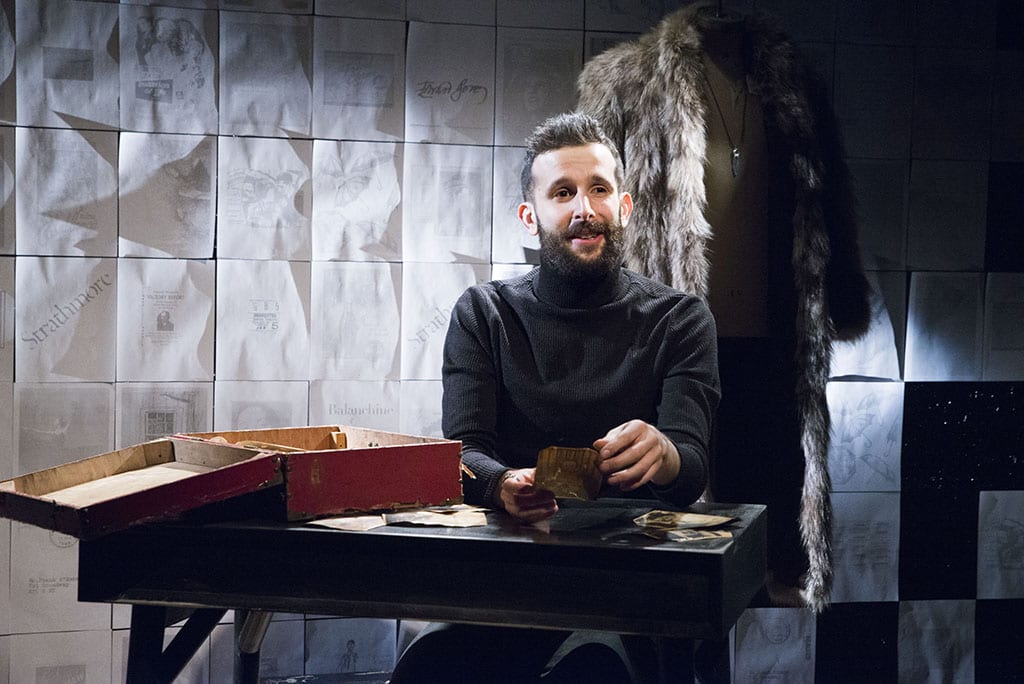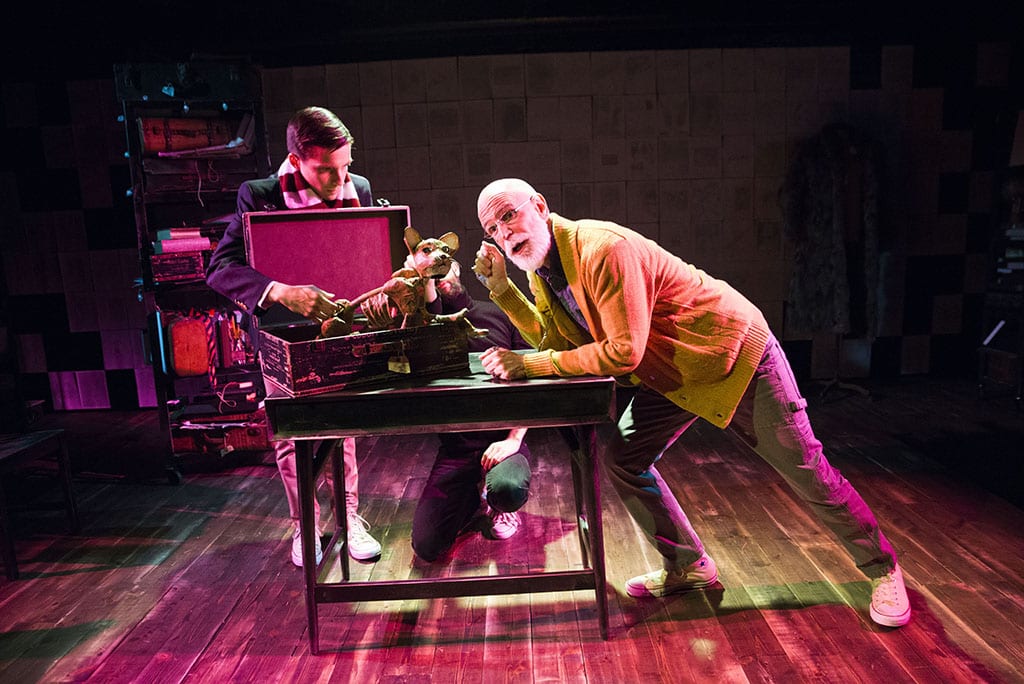Plot. Well this enchanting play really doesn’t have one, so we can dispense with that. Gorey [The Secret Lives of Edward Gorey] is a fluid non-sequential “biography” of the prolific artist based on journals, letters, rare interviews and of course his wonderfully macabre and darkly comical art.
The cast is comprised of three actors portraying Gorey variously as a young man in his twenties, in his forties and in his seventies. Knowing this, I feared I might be watching three very separate sets of monologues. I was in for a delightful surprise. The characters interact essentially as an eccentric entertaining family, jumping back and forth through time to tell Gorey’s tale in the form of random anecdotes about his life.
The play begins in the artist’s historic house (which it can be argued is a character in the play) in Cape Cod. We are introduced to the house and the cats of which the elder Gorey had seven, and about which the middle Gorey remarks is too many. From that moment the audience is taken on a poignant, funny, sometimes dizzying journey through this fascinating, reclusive, and ultimately often tortured life.
We learn all at random through the hilarious, wistful, resentful and completely absorbing performances by the three actors. Andrew Dawson plays the elder Gorey, along with Aiden Sank, the middle-aged artist, and Phil Gillen, the youngster. Andrew Dawson looks back on it all with charm, grace, humor and heartbreak. The terrifically sardonic Aiden Sank gives us a vivid, often hilarious portrayal of the man’s wit and complexity. Phil Gillen perfectly shows us a charming, uncertain young man, trying to find himself as an artist, struggling with his ambiguous sexuality (Gorey throughout his life emphatically refused to be categorized) and trying to figure out where he fit.
There are a myriad of tales about his rather eccentric collection of, um, things. He owned a box of black and white photos of what he initially believed to be sleeping children and babies until a friend pointed out that they were portraits of death. Gashlycrumb Tinies anyone? Maybe.
If anything, Gorey had so many beguiling oddities and possessions to choose from that playwright Russ may have had trouble limiting himself. There’s a fairly short, oddly spotlit segment in which all three Goreys illustrate with dolls that the man sometimes played with toys when he felt blocked. It’s a wee precious, and interrupts the otherwise fascinating, dark ride. And without giving away the ending, there seems to be two of them, each actually fine. The first ending, in the hospital, would suffice.
I must say that the reenactment of a short-lived ballet by his friend George Ballanchine, based on a PanAm commercial in the seventies, is just not something you want to miss! There is an extremely loose, brief performance of Madame Butterfly featuring a lovely wooden puppet of an Abyssinian cat.
The set is simple. There are two or three bookcases crammed with a myriad of, well, stuff, a phonograph, and a table. The back wall is covered with black and white copies of his writings, ephemera, photos and ticket stubs. The lighting is evocative without being intrusive and the periodic projections are fascinating. I can’t in good conscience leave out the soundtrack, which includes, but is not limited to Lesley Gore, Eve Arden, and the soundtrack to the aforementioned PanAm ballet.
Overall, this is a delicious play about a fascinating man. It is not simply for Gorey enthusiasts, but for anyone interested in a very personal look at a talented, eccentric, funny, sad and utterly unique man.





